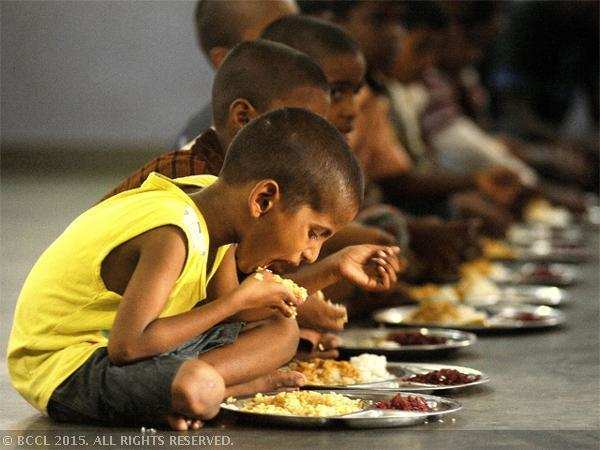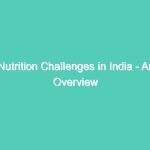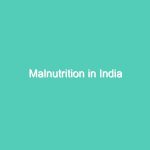Source : https://health.economictimes.indiatimes.com/news/industry/challenges-in-malnutrition/59942512

According to the survey, 38.4% of Indian children under the age of 5 years are stunted. 21% of these children, under 5 years of age, are wasted, while 35.7% are underweight. About 93 lakh children in India are suffering from severe wasting.
World Bank data indicates that India has one of the world’s highest demographics of children suffering from malnutritionBy Akshat Khandelwal
Director (CEO) Nuflower Foods and Nutrition Pvt. Ltd.
We may have come a long way from an undeveloped to developing nation, and in many ways, even a developed country, but there are innumerable challenges that continue to plague us from time to time.
One such grave hurdle that is not only grim and often comes in the way of further growth and development is the issue of malnutrition that affects many children. In fact, many of them have been dying of hunger even in this day and age. World Bank data indicates that India has one of the world’s highest demographics of children suffering from malnutrition – said to be double that of Sub-Saharan Africa with dire consequences. India’s Global Hunger Index India ranking of 67 out of the 80 nations with the worst hunger situation places us even below North Korea or Sudan. 44% of children under the age of 5 are underweight, while 72% of infants have anaemia. There may not be easy answers to such starling statistics. The latest National Family Health Survey brings the severity of malnutrition to the forefront in form of numbers. According to the survey, 38.4% of Indian children under the age of 5 years are stunted. 21% of these children, under 5 years of age, are wasted, while 35.7% are underweight. About 93 lakh children in India are suffering from severe wasting.
Of late the development of RUTF (Ready-to-Use-Therapeutic Food) or the ‘magic bullets’, combined with the adoption of community-based management and treatment of acute malnutrition, has greatly been in discussion, consideration and observation. According to the World Health Organisation (WHO), RUTF has revolutionized the treatment of severe malnutrition in Africa. RUTF is a ready-to-use paste which can be consumed directly by the child and provides sufficient nutrient intake for complete recovery. The product is based on peanut butter mixed with dried skimmed milk and vitamins and minerals and is distributed by United Nations Children’s Fund (UNICEF). Its increased use has not only resulted in the effectiveness and efficiency of therapeutic feeding care but also risen questions on sustainability of RUTF. The only published trial on RUTF in Maharashtra shows that after eight weeks, 82.8% of children on medical nutrition therapy (MNT, similar to RUTF) in a controlled and supervised environment moved out of severe acute malnutrition (SAM) status, compared to 64.4% of children on standard nutrition therapy (based on nutritious local food ingredients). With National Family Health Survey-3 estimates at nearly 8 million children suffering from severe acute malnutrition (SAM) in India, RUTF is the immediate need of the hour and answer to India’s grave concern on alarming Malnutrition figures.
It has a distinctive edge over competition: it’s caloric dense, high in proteins, vitamins and minerals; simple to deliver and administer; easy to use; fast acting; affordable and acceptable cost; does not require trained staff to administer; culturally acceptable; packed in single-serve packets; requires little preparation before use; adequate shelf life and stability; can be stored in varied climatic conditions and temperature; resistant to bacterial contamination; and does not cause addiction to child. We may have come a long way from an undeveloped to developing nation, and in some ways, even a developed country, but there are innumerable challenges that continue to plague us from time to time. The development of ready-to-use therapeutic food (RUTF) for the treatment of uncomplicated cases of severe acute malnutrition in young children from 6 months to 5 years old has greatly improved survival through the ability to treat large numbers of malnourished children in the community setting.
What makes dealing with malnutrition rather challenging is its root which runs deep into India’s complex social structure. India sees almost half of its women population getting married by the age of 18. Early marriages see young women bearing under-nourished children. In a long and vicious cycle of patriarchy which starts at the birth of a girl child who is considered an economic burden upon parents, the girl child is not invested in, in terms of health, education and finances. This leads to the upbringing of under-nourished young women who go on to bear under-nourished children. Gender disparity and inadequate birth planning add to birth of unhealthy children. A short and thin woman is more likely to birth a child who is stunted and underweight. Despite the introduction of programmes such as ICDS and Nutrition Mission, a rise in Wasting in India indicates our failure in reaching to the most vulnerable children. The inefficiency of these programmes in yielding results could be attributed to the work being done in silos, lack of strategic vision, corruption and reduced financial resources.
It is a pity that India has no national guideline on Community Management of Acute Malnutrition (CMAM) despite the release of a joint statement on CMAM by WHO, WFP, UNICEF and the United Nations System Standing Committee on Nutrition, back in 2007. Nutrition Mission only covers 6 states. Introduction of a standard mandate and machinery across all states to treat malnutrition is the need of the hour. Under nutrition in children worldwide is considered the direct or indirect cause of mortality in approximately 45% of all deaths among children younger than five, and has lifelong consequences for physical and cognitive wellbeing. In 2014, it was estimated that 50 million children under five globally were wasted (acutely malnourished), and 16 million of those were severely wasted, while 23.8% of children under five were stunted, representing a more chronic form of under nutrition. This phenomenon is readily growing and under such severe conditions RUTF is an immediate answer to the problem while agricultural, health and trade policies should be constructed to make nutrition available to everyone sustainably.



